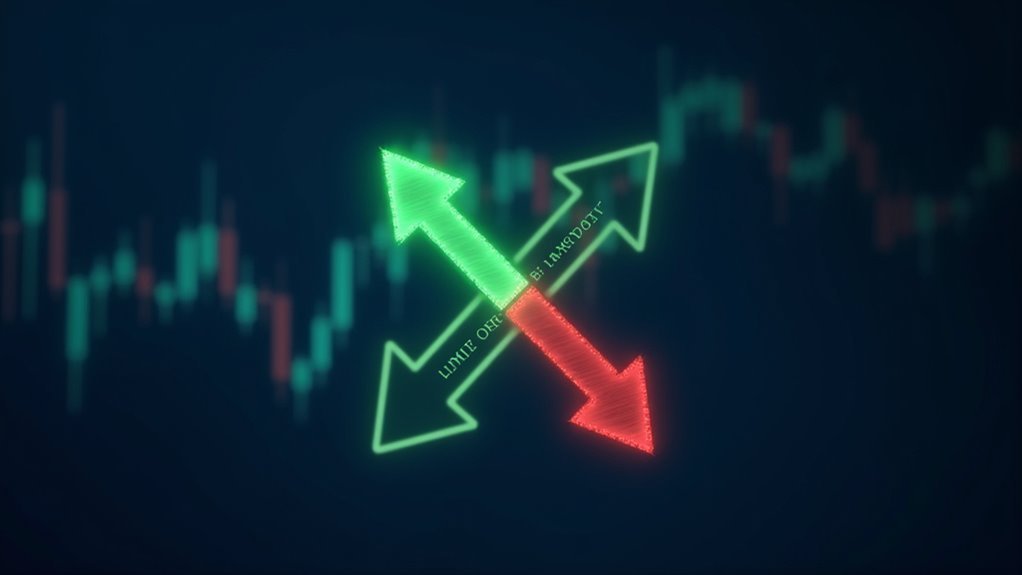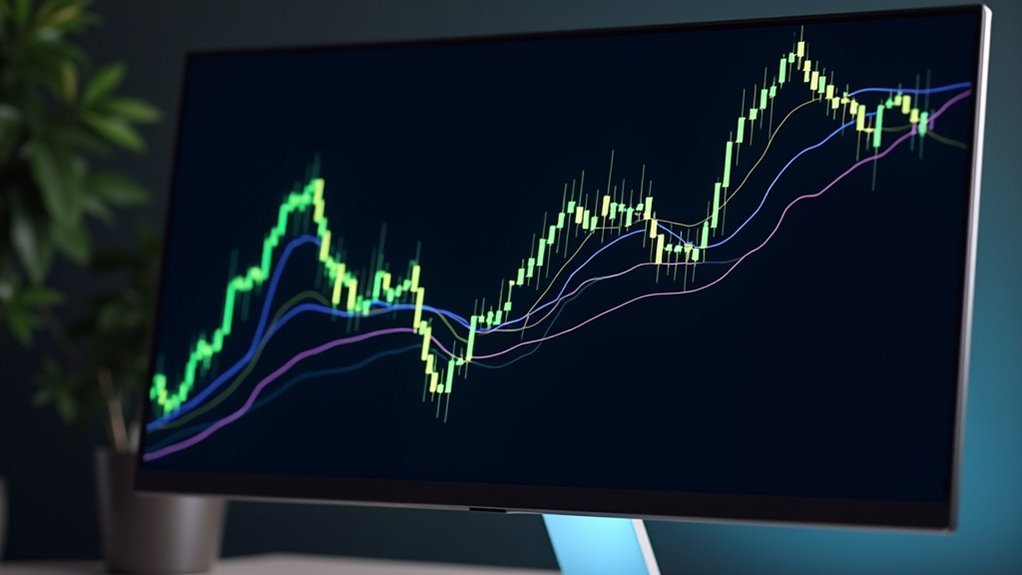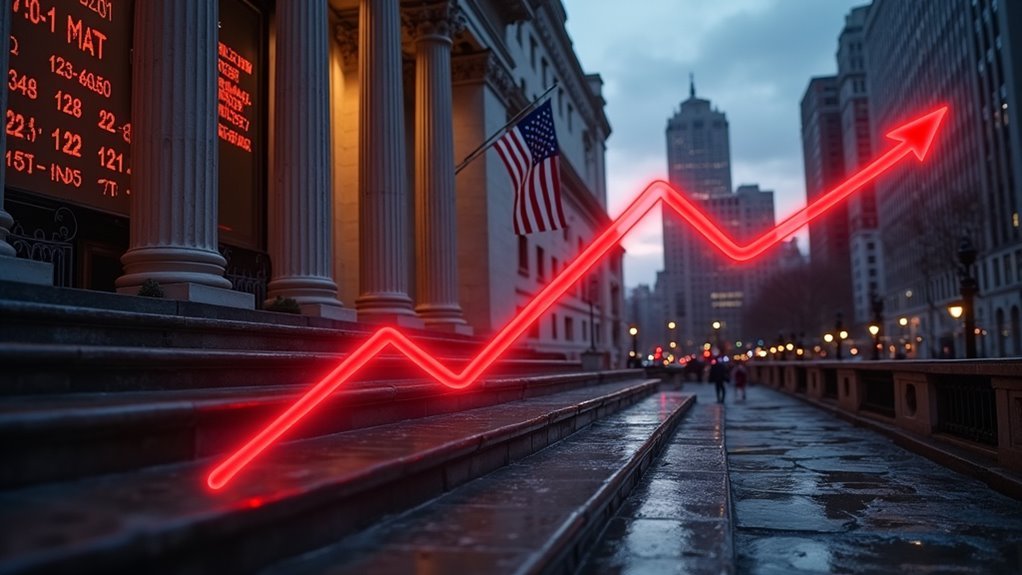Market orders execute immediately at current prices – perfect for investors who want shares right now and don’t care about exact prices. Limit orders let traders set specific purchase prices but might never execute if the stock doesn’t cooperate. Market orders risk slippage in volatile stocks, while limit orders risk missing opportunities. Big, liquid stocks work well with market orders; smaller or volatile stocks need limit orders. The choice depends on how much control matters.

When it comes to placing stock trades, investors face a critical choice between market orders and limit orders – and getting it wrong can cost serious money.
Market orders are the quick-and-dirty solution, executing immediately at whatever price the market happens to be offering. They’re like walking into a store and saying “I’ll take it” without checking the price tag. Sure, you’ll get your shares right away, but you might not like what you paid for them. Transaction fees tend to be lower with market orders compared to other order types. When the market is closed, these orders execute at opening the next trading day.
Market orders are like buying blind – you’ll get what you want fast, but the price might make you wince.
Limit orders are the pickier cousin. They let investors name their price, refusing to execute until the stock hits that magic number. It’s like leaving a lowball offer on a house – maybe you’ll get it, maybe you won’t. These orders work beautifully for controlling costs but can leave traders sitting on their hands while opportunities slip away.
The real kicker with market orders is their tendency to surprise. Think you’re buying shares at $50? Surprise! The price just jumped to $52 in the seconds it took to place your order.
That’s slippage for you – the market’s way of saying “gotcha.” Market orders shine brightest with big, liquid stocks during calm trading hours. Try using them on a thinly traded stock during volatile times, and you might as well be throwing darts blindfolded.
Limit orders aren’t perfect either. They can expire unfilled, leaving investors empty-handed while their target stock soars past their limit price. Like fixed income bonds, they offer more predictability but might mean sacrificing potential gains.
And partial fills? Those are just plain annoying. Nobody wants to pay multiple commission fees because their order got chopped into pieces.
The choice between these order types often comes down to urgency versus precision. Need those shares right now and trading a blue-chip stock? Market order might be your friend.
But if you’re dabbling in smaller stocks or just can’t stomach price uncertainty, limit orders provide that safety net. The market doesn’t care which one you choose – it’ll take your money either way. It’s just a matter of how much control you want over the process.
Frequently Asked Questions
Can I Switch Between Market and Limit Orders After Placing Them?
Most brokers allow switching between market and limit orders before execution – but timing is everything.
Once an order starts filling, changes are off the table. Regular trading hours offer the most flexibility for modifications.
The catch? You’ll need to cancel the original order and submit a new one.
And heads up – modified orders lose their place in line. Pretty simple stuff.
What Happens if Trading Is Halted While My Order Is Pending?
During a trading halt, pending orders sit in limbo – no executions happening, period.
Market orders will wait patiently until trading resumes, though the price could be wildly different.
Limit orders stick around too, but at least they’ve got a price ceiling.
Smart move: orders can be modified or cancelled during the halt.
When trading restarts, buckle up – things might get choppy.
Do Market Makers Give Preference to Certain Order Types?
Market makers definitely favor limit orders over market orders.
It’s not personal – just business. Limit orders let them control execution prices and manage risk better.
They can work the bid-ask spread more effectively and build inventory strategically. Plus, they can place multiple orders at different price levels.
Size matters too – larger orders often get more attention.
Simple market economics at work.
Can I Place Orders Outside Regular Market Hours?
Yes, orders can be placed outside regular market hours, but with restrictions.
Most brokers allow trading during pre-market (4:00 AM – 9:30 AM ET) and after-hours (4:00 PM – 8:00 PM ET) sessions.
Market orders typically don’t work – limit orders are required.
Extended hours trading comes with less liquidity, wider spreads, and more volatility.
Not all stocks are eligible, and some brokers charge extra fees for these sessions.
How Do Order Types Affect My Broker’s Commission Fees?
Most brokers charge the same commission regardless of order type. Simple as that.
Flat-fee structures don’t care if you use market or limit orders. However, some brokers get fancy with tiered pricing – they might charge extra for complex orders or offer discounts on large trades.
Zero-commission brokers? They couldn’t care less about order types. The real cost difference comes from execution quality, not fees.








